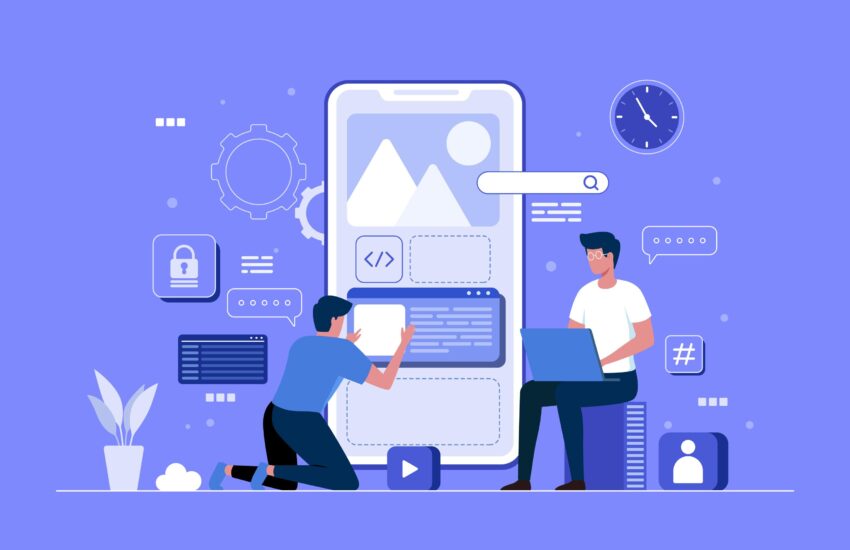In today’s fast-paced digital landscape, the on-demand app industry has emerged as a dominant force, revolutionizing the way we access services and products. With the increasing demand for convenience and efficiency, on-demand app development is at the forefront of innovation, and its future promises exciting advancements. In this article, we will explore the latest trends and predictions that will shape the on-demand app market tomorrow.
1. AI-Powered Personalization
As technology continues to advance, artificial intelligence (AI) is becoming an indispensable part of on-demand apps. AI-powered personalization allows businesses to offer tailored experiences to their users. Through machine learning algorithms, apps can analyze user behavior, preferences, and historical data to provide highly personalized recommendations. This level of personalization enhances user satisfaction, increases engagement, and ultimately leads to higher customer retention rates.
2. Seamless Integration of IoT
The Internet of Things (IoT) is another game-changer in the on-demand app development realm. Integrating IoT with on-demand apps enables seamless connectivity between various devices and applications. For instance, in the transportation sector, IoT sensors in vehicles can communicate with the app, allowing users to track real-time locations and estimated arrival times accurately. This integration enhances overall user experience and efficiency, fostering a more reliable on-demand service ecosystem.
3. Blockchain for Security and Transparency
As concerns about data security and privacy continue to grow, blockchain technology is emerging as a solution for on-demand apps. Blockchain offers decentralized and immutable data storage, which enhances security and transparency for both users and businesses. Moreover, blockchain-based smart contracts can streamline the payment process, ensuring faster, more secure transactions. By leveraging blockchain, on-demand apps can build trust with users, leading to increased adoption rates.
4. Augmented Reality (AR) Enhancements
Augmented Reality (AR) is taking on-demand apps to the next level. It allows businesses to create interactive and immersive experiences for their users. For instance, in the retail industry, customers can virtually try on clothing or preview furniture in their homes before making a purchase. AR enhancements not only boost user engagement but also help businesses showcase their products more effectively, leading to increased conversions.
5. Voice-Enabled Interfaces
The rise of voice-activated virtual assistants and smart speakers has paved the way for voice-enabled interfaces in on-demand apps. By integrating voice commands, app interactions become more intuitive and convenient for users. Voice technology streamlines the user experience, making it faster and hands-free. As this technology evolves, it will become an integral part of on-demand apps, especially in industries like food delivery, where hands-free interactions are highly valued.
6. Hyper-Personalized Content Delivery
Content is king, and delivering the right content to the right audience is essential for the success of on-demand apps. Hyper-personalized content delivery leverages user data to present targeted information, offers, and recommendations. By understanding user preferences, on-demand apps can curate content that resonates with their audience, fostering stronger brand loyalty and engagement.
7. Expansion to Niche Markets
As the on-demand app market matures, businesses are exploring niche markets to cater to specific audiences. Rather than focusing solely on broad services, niche on-demand apps concentrate on delivering specialized offerings. For example, on-demand apps dedicated to pet care, medical consultations, or home services are gaining popularity. By targeting niche markets, businesses can gain a competitive edge and foster customer loyalty.
8. Multi-Platform Development
With the prevalence of multiple devices and operating systems, on-demand apps need to be accessible across various platforms seamlessly. Multi-platform development ensures that apps can cater to users on Android, iOS, web browsers, and even wearable devices. A well-optimized multi-platform approach increases the app’s reach and accessibility, catering to a broader audience.
9. Enhanced Security Measures
As cyber threats become more sophisticated, ensuring the security of on-demand apps is paramount. Developers must prioritize data encryption, two-factor authentication, and regular security audits. A strong security framework not only protects user information but also builds trust with potential users who are increasingly concerned about data breaches.
10. Real-Time Analytics and Insights
To stay ahead in a competitive market, businesses must have access to real-time analytics and insights. Monitoring app performance, user behavior, and market trends in real-time allows businesses to make data-driven decisions promptly. Analyzing user feedback and behavior helps in continuous app improvement and meeting evolving user expectations.
Conclusion
The future of on-demand app development is poised for remarkable growth and transformation. AI-powered personalization, seamless integration of IoT, blockchain security, AR enhancements, voice-enabled interfaces, hyper-personalized content delivery, niche market expansion, multi-platform development, enhanced security measures, and real-time analytics will be the driving forces behind tomorrow’s on-demand app market.

